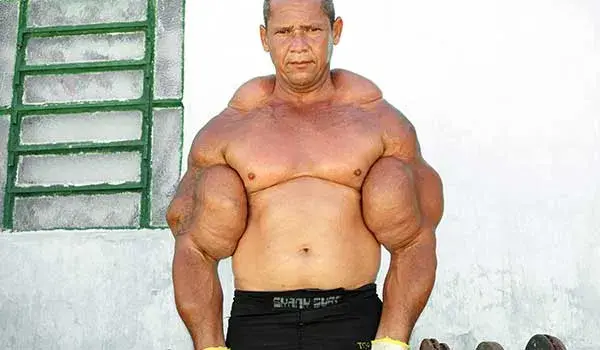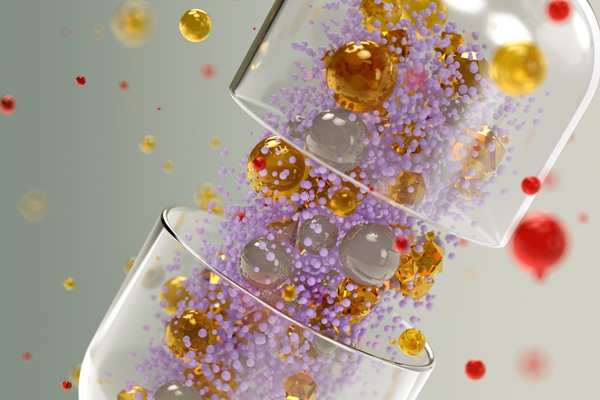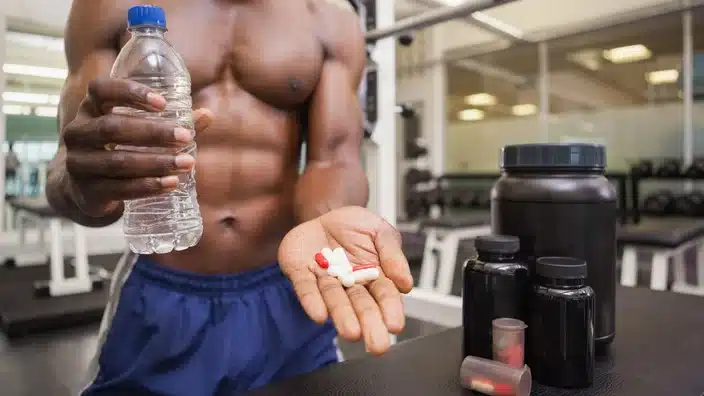The impact of steroids on bodybuilding culture has been a contentious topic for decades, shaping the way the community views competition, success, and health. The use of these substances has intertwined with the pursuit of the ideal physique, leading to both advances in bodybuilding techniques and significant concerns over wellbeing. As the culture has evolved, so too has the conversation around the role of steroids, from the golden era of bodybuilding to the nuanced discussions of today.
The debate over steroids in the bodybuilding sphere is not only about legality and ethics but also encompasses the biological implications on long-term health. This discussion draws attention to the need for understanding steroids’ physiological effects and the cultural pressure within the bodybuilding community to achieve ever-more impressive physical feats. The discourse is further complicated by the legal ramifications of steroid use, which vary widely by region, and by the ongoing search for viable, healthier alternatives to enhance muscle growth and performance.
Quick Summary
- Steroid use has significantly influenced bodybuilding culture, affecting perceptions of success and health.
- The community remains divided on ethical and biological implications of steroid use in bodybuilding.
- Continued debates and research underline the quest for healthy alternatives and future advancements in the sport.
Historical Overview of Steroids in Bodybuilding

Steroids have drastically shaped bodybuilding culture since their inception, influencing not only competitive sports but also gym life and the layperson’s approach to fitness. This section examines the introduction of steroids into sports and their profound impact on bodybuilding as a discipline.
The Emergence of Steroids in Sports
Steroids, specifically anabolic-androgenic steroids, entered the sports arena in the 1950s as tools to enhance performance. Athletes began using steroids to augment strength and stamina, leading to unprecedented levels of performance in various sports, including bodybuilding. Sports medicine professionals observed the effects of these substances, documenting substantial increases in muscle mass and recovery rates.
- First Known Use: Anabolic steroids were first known to be used by weightlifters and bodybuilders in the 1950s and 1960s.
- Spread: Their use spread to other sports, prompting a global conversation on the ethics and health implications of performance-enhancing drugs.
- Regulation Efforts: It wasn’t until the late 20th century that significant efforts were made to regulate steroid use in sports.
Evolution of Bodybuilding Culture
The internet has become a pivotal platform for the exchange of information on steroids; forums, articles, and online communities discuss the use of performance-enhancing drugs openly. Gym culture has also evolved, with an increase in the availability of steroids contributing to their normalization among amateur bodybuilders.
- Attachments to Discipline: Steroid use has raised questions within the sociology of sports concerning the discipline required by bodybuilding, contrasting the dedication to natural bodybuilding with the shortcut sought through steroid use.
- Bodybuilding History Change: Bodybuilding competitions have seen dramatic shifts in participant physiques over the decades due to steroid use, emblematic of the substances’ impact on the sport.
References
- National Institute on Drug Abuse; Anabolic Steroids; https://www.drugabuse.gov/publications/drugfacts/anabolic-steroids
- U.S. Anti-Doping Agency; A Brief History of Anti-Doping; https://www.usada.org/spirit-of-sport/education/a-brief-history-of-anti-doping/
Biological and Health Impact of Steroids Use

Anabolic steroids have diverse effects on the human body, influencing various physiological processes and potentially leading to significant health consequences. This section examines the biological ramifications and health risks linked to steroid use in detail.
Understanding Anabolic Steroids
Anabolic steroids are synthetic variations of the male sex hormone testosterone. They promote muscle growth and enhance male sexual characteristics. Medically, they are used for treating conditions like delayed puberty and muscle loss due to disease. However, their non-medical use for muscle building and performance enhancement can lead to adverse effects.
Physical Health Risks
Anabolic steroid abuse has been linked to a range of physical health issues. Frequent use can cause an increase in heart size and changes in the heart’s structure, which may lead to heart failure. Significant strain is also placed on the liver, which manifests through altered liver enzymes, predisposing users to liver diseases. The kidneys, another vital filtering organ, often suffer from steroid-related damage, which can impair their function over time. Other serious health risks include:
- Hormonal disbalance: Leading to conditions like gynecomastia (development of breast tissue in men).
- Musculoskeletal system: Steroid use in adolescents can cause premature bone maturation and limit growth.
- Skin: Acne and cysts are common and can be severe.
Psychological Effects and Addiction
The psychological impact of steroid use is profound. Anabolic steroids have been associated with mood swings and changes in behavior. Individuals may experience heightened aggression, commonly referred to as “roid rage,” as well as anxiety and depression. The potential for addiction arises as users may develop a reliance on steroids for body image reasons or to maintain muscle mass and strength, leading to withdrawal symptoms when use is discontinued.
References
- National Institute on Drug Abuse (2021). “Anabolic Steroids.” https://www.drugabuse.gov/publications/drugfacts/anabolic-steroids
- Mayo Clinic. “Performance-enhancing drugs: Know the risks.” https://www.mayoclinic.org/healthy-lifestyle/fitness/in-depth/performance-enhancing-drugs/art-20046134
- American Heart Association. “Illegal Steroids Linked to Greater Risk of Heart Disease.” https://www.heart.org/en/news/2021/03/25/illegal-steroids-linked-to-greater-risk-of-heart-disease
The Legal and Ethical Debate

The legal and ethical considerations surrounding steroid use in bodybuilding are complex, involving the intersection of law, public health, and moral principles in the sport.
Steroids and the Law
In many countries, anabolic steroids are classified as controlled substances, making their non-prescribed use, possession, or distribution a criminal offense. For instance, in the United States, anabolic steroids were placed under the Controlled Substances Act in the Anabolic Steroid Control Act of 1990. This legislation categorized steroids as Schedule III substances, alongside drugs that have a potential for abuse and dependency.
- United States: Schedule III Controlled Substances
- UK: Class C drugs, prescription-only
- Canada: Schedule IV controlled substances
Regulations vary worldwide, but there is a trend towards stricter laws and enforcement to prevent non-medical use.
Ethics in Bodybuilding
The use of steroids in professional bodybuilding has sparked a major ethical debate. While some argue they level the playing field, others consider them a form of cheating that undermines hard work. It raises questions about the impact of these substances on fairness and the integrity of the sport.
- Fairness: Concerns about advantages in muscle growth and recovery.
- Integrity: Impact on the sport’s reputation and athletes’ health.
Educational initiatives have been launched to inform athletes and the public about the risks of steroid use, aiming to foster an ethical approach to bodybuilding.
Societal Perceptions of Steroid Use
The public perception of steroid use fluctuates and is often fueled by media portrayal of bodybuilders and doping scandals. Public health campaigns and addiction support services work to counteract the potential glamorization of steroids, highlighting the health risks and long-term consequences of their use.
- Public Health: Campaigns addressing risks of steroid use.
- Violence and Addiction: Efforts to link and address aggressive behavior and dependency issues.
Societal views on steroid use significantly influence the regulation and education surrounding performance-enhancing drugs.
Fitness Regimens and Alternatives to Steroids

The focus of this section is on established training methodologies and dietary practices that can serve as viable alternatives to steroid use for muscle building and fitness improvement.
Training Methods and Diet
To optimize muscle mass and overall fitness, athletes and bodybuilders should combine resistance training, cardiovascular exercises, and a balanced diet. Resistance training is pivotal for muscle growth and includes activities like free weights, machines, and bodyweight exercises. Implementing progressive overload by gradually increasing the weight or intensity ensures continuous muscle adaptation and growth.
Cardiovascular exercises such as running, cycling, or swimming are crucial for heart health and can aid in maintaining a lean physique by burning excess fat.
A balanced diet is essential in fueling workouts and muscle recovery. A focus on high-protein foods, complex carbohydrates, and healthy fats supports muscle repair and energy needs. Supplements like whey protein, creatine, and branched-chain amino acids (BCAAs) can complement a diet but should never replace whole foods.
Key elements of a bodybuilder’s diet may include:
- Lean proteins: chicken, fish, eggs, tofu
- Carbohydrates: oats, brown rice, sweet potatoes
- Fats: avocados, nuts, olive oil
- Hydration: water, electrolyte-rich beverages
Natural Bodybuilding
Natural bodybuilding is a discipline that rejects performance-enhancing drugs and promotes achieving muscle development through hard work, precise nutrition, and knowledge of the human body. Participants often follow rigorous training routines and strictly monitor their diet to maximize their genetic potential.
Coaching plays a significant role in natural bodybuilding. A knowledgeable coach can implement tailored fitness regimens that focus on an individual’s unique physiological needs, leading to efficient gains without health risks. Prevention of injuries is also prioritized, with proper technique and recovery periods emphasized.
Natural bodybuilders may invest more time to achieve their goals, but they maintain their health and integrity in the process. Fitness competitions for natural bodybuilders provide an environment where health and fitness are preserved, advocating for a drug-free sport.
References
- National Strength and Conditioning Association (NSCA): https://www.nsca.com/
- American Dietetic Association (ADA): https://www.eatright.org/
- International Society of Sports Nutrition (ISSN): https://www.sportsnutritionsociety.org/
Personal Stories and Social Perspectives

This section dives into the individual experiences of bodybuilders and the broader cultural dynamics about gender within the bodybuilding community.
Bodybuilders’ Experiences
Bodybuilders often speak about the profound impact steroids have on their muscle growth and physique. The use of androgens, synthetic versions of testosterone, can lead to a significantly enhanced muscle-building capacity. However, it is also associated with a variety of health risks, including alterations to the reproductive system. One prominent male bodybuilder recounted how steroid use caused hormonal imbalances that required medical intervention, risking their long-term health for short-term gains.
- Case Study 1: Patrick D. (male bodybuilder)
- Muscle Growth: Substantial increase within 6 months.
- Health Complications: Testosterone suppression, required post-cycle therapy.
Women in bodybuilding also grapple with the effects of steroids, which are compounded by social pressures and gender stereotypes. A female bodybuilder shared her experience with societal backlash for challenging traditional female body standards through her use of muscle-enhancing substances, which alter natural androgen levels. She faced intensified scrutiny not only for her body but also for her choices that diverge from gender norms.
- Case Study 2: Nicole S. (female bodybuilder)
- Physical Changes: Significant muscle development overshadowed by public criticism.
- Social Impact: Experienced marginalization and stereotyping within and outside the bodybuilding community.
Community and Gender Dynamics
The bodybuilding community itself presents a complex social environment where coaching and peer relationships significantly influence decisions around steroid use. Coaches may pressure athletes to use steroids to remain competitive, while peers often provide the sort of tacit endorsement or pressure that maintains steroid use as a cultural norm within the sport. This dynamic can lead to a tense atmosphere where bodybuilders might feel compelled to use performance-enhancing substances to fit in or succeed.
- Community Influence:
- Coaches: Can be either a source of pressure or guidance.
- Peers: Mutual reinforcement of steroid use creates a challenging environment for those who wish to abstain.
Gender dynamics within bodybuilding also contribute to a distinct set of challenges for women. Stereotypes surrounding muscle-building for women often lead to heightened stigma and reduced visibility in the sport. Despite this, women continue to assert their identity and claim space within the bodybuilding community, reshaping norms and expectations for female athletes.
- Gender-Specific Issues:
- Visibility: Women bodybuilders often struggle to gain recognition in a male-dominated space.
- Stereotyping: Societal expectations of femininity clash with the muscular female physique, leading to social stigma.
References
Advancements and Future of Bodybuilding

Bodybuilding is being transformed through innovations in sports medicine and the expansive reach of social media. These elements contribute to the growth and exposure of the sport.
Emerging Technologies in Sports Medicine
In bodybuilding, sports medicine has greatly benefited from advanced technology. 3D bioprinting is now being used to study muscle tissue and repair, offering insights that were previously impossible. This allows for more effective rehabilitation protocols and injury prevention strategies, potentially extending the careers of bodybuilders.
The use of growth hormones, under medical supervision, provides another layer to muscle enhancement and recovery. Research into specific strains of growth hormones offers insight into muscle growth, fat distribution, and overall body composition optimization.
The Role of Social Media in Bodybuilding
Social media has had a profound impact on bodybuilding culture. Platforms like Instagram and YouTube serve as stages for bodybuilders to share their progress, techniques, and contests, reaching a global audience instantaneously.
- Education and Knowledge Sharing: Through video tutorials and posts, novice bodybuilders have access to a wealth of knowledge that was previously gatekept by industry professionals.
- Fitness Influencers: They sway public opinion and often promote products or routines, thereby shaping the industry’s trends and future.
The internet overall has democratized access to bodybuilding culture, allowing for a more informed and engaged community. This interconnectedness ensures a continuous exchange of knowledge, bolstering both the popularity and the scientific understanding of bodybuilding.
References
Frequently Asked Questions

Steroid usage in bodybuilding has a range of implications on health, physique, psychology, and the sport’s regulations. Understanding these aspects is key to comprehending the broader impact of steroids on the culture.
What are the long-term side effects of steroids in bodybuilding?
Long-term side effects of steroids can include cardiovascular issues, liver damage, hormonal imbalances, and a heightened risk of certain cancers. Bodybuilders using steroids might face these adverse effects which can be severe and persist long after steroid use has ceased.
How do steroids alter before and after physiques in bodybuilding?
Steroids can dramatically increase muscle mass and reduce body fat which often results in notable changes in physique. These transformations can be astonishingly rapid compared to natural bodybuilding progress.
What are the commonly reported side effects of steroids on the brain within the bodybuilding community?
Steroids are associated with psychological effects such as mood swings, increased aggression, or feelings of invincibility, as well as potential depression during withdrawal phases. These side effects are often reported within the bodybuilding community.
Which types of steroids are most prevalent among bodybuilders?
Anabolic steroids like Dianabol, Trenbolone, and Anadrol are some of the most commonly used by bodybuilders seeking to enhance muscle growth, strength, and overall performance.
How has the popularity of steroids changed in bodybuilding culture over time?
The popularity of steroids in bodybuilding has fluctuated with increased awareness of health risks and enhanced drug testing reducing their use competitively, yet some amateur bodybuilders still seek out these substances.
What is the stance of professional bodybuilding organizations on steroid use?
Professional bodybuilding organizations generally prohibit the use of steroids, implementing drug testing protocols to deter competitors from using these banned substances and promote a level playing field.
References
- “Long-term effects of anabolic steroids” – Mayo Clinic
- “Psychological and physical impact of anabolic-androgenic steroid dependence” – NIH
- “Anabolic steroids abuse and male infertility” – NCBI
- “Regulation of steroids in professional sports” – USADA
Dr. Grant Fourie, a specialist in male hormones, is based in Cape Town, South Africa. He provides comprehensive treatments for conditions related to low testosterone, such as erectile dysfunction, fatigue, and mood changes. His methods include hormone replacement therapy and other modern treatment options.
Contact me via email or phone to book personal appointment in my clinic: The Village Square, Cape Town - South Africa



